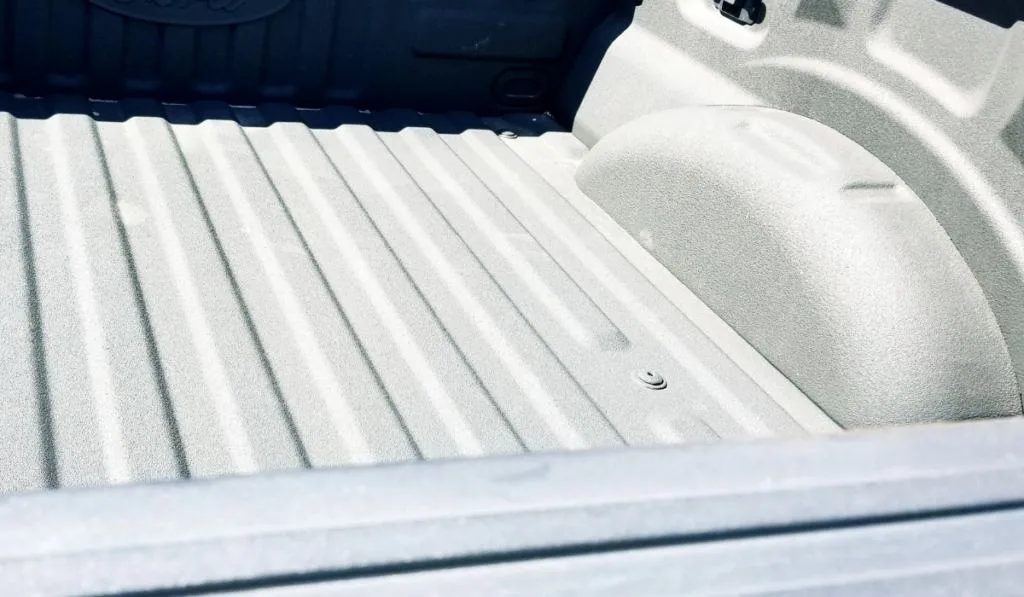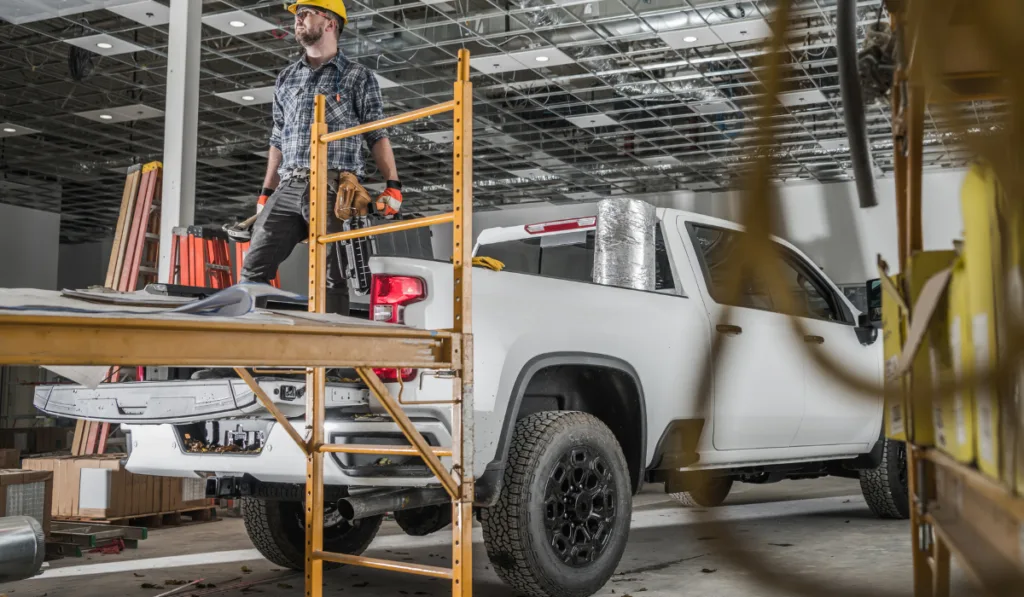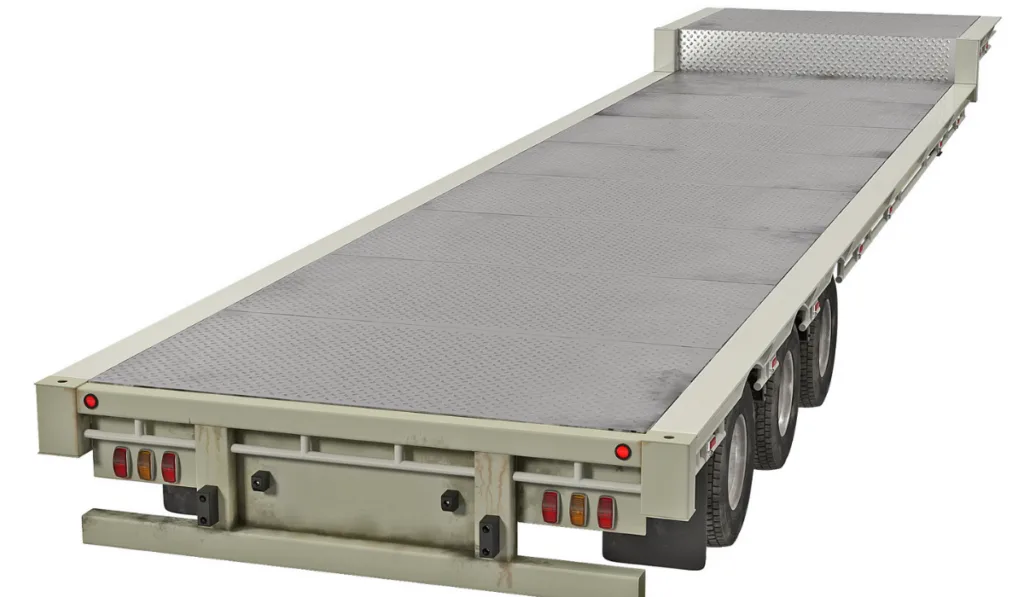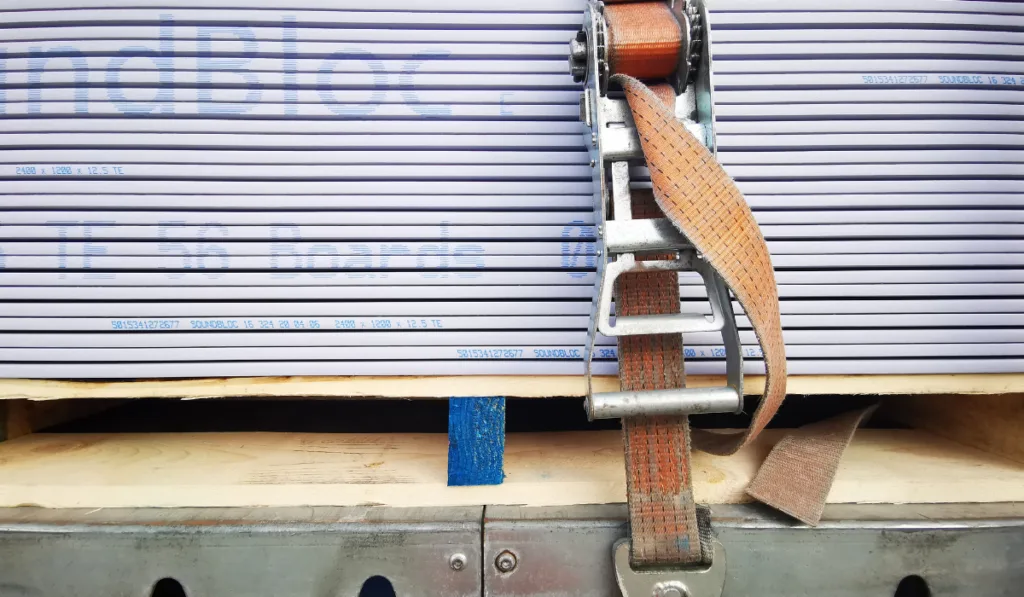*This post may have affiliate links, which means I may receive commissions if you choose to purchase through links I provide (at no extra cost to you). As an Amazon Associate, I earn from qualifying purchases. Please read my disclaimer for additional details.
Drywall is relatively sturdy in small amounts, but when it comes to long sheets of drywall, it can easily break, especially in the middle and up in the corners. This is exacerbated by the fact that you may have to carry multiple sheets of drywall in a truck bed that may not accommodate their size.
There are several ways to safely transport stacks of drywall in the bed of a pickup truck, including using a hauling rack, using plenty of straps, taking advantage of the side slots to make your own hauling rack, using plywood, or a combination of some of these methods.

For safety purposes, you never want to haul stacks of plywood that aren’t strapped in such a way that they can’t fall out of the truck while you are moving down the highway.
Worldwide, around 440 people die every year because of unsecured loads. That number may not seem too high, however, that person could be someone you are close to, or even you.
Table of Contents
Weight and Dimensions of Drywall

When you stop and think about it, drywall can get pretty heavy, especially if you are going to be hauling large stacks of the stuff.
The overall weight of the drywall that you want to haul isn’t only a matter of protecting the drywall from breaking and keeping the drywall stable inside your truck bed.
It’s also a matter of how the weight will affect your truck on the road. There are three things that you need to consider before you load up the truck bed with a giant stack of drywall and head down the road.
- How the weight of the drywall will affect your turning
- Keep your speed down while driving with drywall in the back
- Being careful about the load limit on your truck
The weight of the drywall can be surprising, especially when you have it all loaded up in the truck and you are out on the road. If you are carrying quite a bit of drywall, you will definitely feel the difference in your truck’s maneuverability and speed.
- ¼” drywall weighs approximately 1.2lbs per square foot
- ½” drywall weighs approximately 1.6lbs per square foot
- ⅝” drywall weighs approximately 2.2lbs per square foot
That means that a single sheet of drywall that is 4’ x 12’ at ½” thickness will weigh close to 77lbs. Imagine having 10 of those stacked. Now you have 770lbs in the back of your truck and that is more than enough to affect your driving.
Most of the time, you will be dealing with 4’ x 8’ sheets of drywall, as that is pretty standard fare. So, if you have a stack of 20 sheets of 4’ x 8’ drywall that is ⅝” thickness, you will be carrying 528lbs.
That may not be a lot of weight in terms of what your truck is capable of hauling, but it is a lot of weight if you like to take turns hard enough to apply 3Gs worth of force.
So, any way you look at it, you will have to be far more careful when you turn.
The size of the sheets may also require you to set them in the bed on a hauling rack or some other rack, elevating several of the sheets above your bed.
That means you are completely dependent on straps holding your drywall in place when you make turns.
Drywall isn’t known for being an extraordinarily grippy material and it loves to slide around when forces are applied to it.
Keep your speed down as well. Slamming on the brakes with 800lbs of drywall in the back is not going to be a blast for everyone involved.
Last but not least, know what your load limits are. This article doesn’t refer to trucks only in terms of heavy-duty diesel vehicles.
Some trucks may have short beds and sport v6 engines. The load limits on smaller trucks are significant when compared to how many sheets of drywall you can throw in the back.

Methods for Transporting Drywall in a Pickup Truck
The more stacked the drywall is, the better able it will be able to travel without foundational support in the center, however, it’s not worth risking that if you can help it.
One solution to that question is to use a hauling rack.
Use a Hauling Rack

A hauling rack is designed to haul things like plywood and drywall because it offers a full layer of foundational support underneath and you won’t have to prop your drywall up on the top of the wheel wells with no support in the rear.
A hauling rack elevates the drywall up above the top of the wheel wells and also extends that support to the tailgate and even past the tailgate if you need something that long.
These beds are easy to bolt or strap down to your truck’s bed so there is plenty of stability as well.
You can also build your own hauling rack using several 2x4s. If you are looking straight down at your truck bed, from above, with the front of the truck at the top, the rack would be shaped like a tic tac toe board, with two, 2×4 legs on the rear (bottom of the rack) and the front settling on the top of the wheel wells at the same height as the rear 2×4 legs.
Two of the 2x4s will run vertically, from this same viewpoint and will rest directly under the bottom sheet of drywall.
It’s a simple yet effective design that you can remove and place in your truck anytime you need it, which is a great portability factor.
Use Your Pickup’s Side Panels
Oftentimes, your truck will come with slots along the length of the side panels. These slots are normally large enough to accommodate two, 2x4s running horizontally across the width of the truck bed.
All you have to do is bolt the two, 2x4s down and you are ready to start stacking sheets of drywall on top of them.
The only drawback is that this method is significantly more elevated than what you would find in a hauling rack or even a DIY hauling rack (assuming you build it to stay somewhat below the height of the bed.
However, it’s a very effective method but you will have to make sure that you strap everything down really well.
In fact, you should go above and beyond when it comes to strapping drywall down if you’re hauling it this way since the bottom sheet will be flush with the top of the truck bed.
You will also need to keep this in mind, more than any other method when you are taking turns. You will need to be far more careful in how hard you take turns with that much weight elevated in the back.
For When Your Bed is Wide Enough

Width is one thing, but drywall sheets are always much longer than they are wide and oftentimes, this means extending well over the lip of a lowered tailgate.
In these cases, you can simply purchase a truck bed extender , which will come in one of two forms.
The first type is the kind that hooks in right at the top of the bed, on each side, where the tailgate normally latches closed.
The tailgate is always dropped when you use this and when you lower it, you will have effectively extended your bed, using the tailgate as an extra 1’ or 1 and ½’ of flooring and the rack taking the tailgate’s place in the back.
The other kind extends your truck bed by mounting to your hitch on the bottom. These are usually heavy-duty steel and raise up at a 90° angle to form what looks like a field goal post in football, flush with the bottom of your truck bed.
Ratchet Straps and 2x4s

This method is the most simple method of the bunch. All you need to do is lay as many 2x4s across the width of your truck bed as necessary. Once your drywall sheets are in place, carefully work your way around the stack, tightening ratchet straps to hold everything in place and to the truck.
The only thing that you need to worry about with ratchet straps is the fact that if you tighten one up too much, it will break the edges of the drywall. To avert this, stack a piece of plywood over the top of the drywall stack.
Make sure that the plywood is flush with the edges of the drywall so that it protects the drywall edges when you tighten down the straps.
This will also allow you to get everything ratcheted down extremely tight, without causing any undue damage.
All Things Considered
If you want to use your truck bed for transporting sheets of drywall, don’t sweat the fact that your truck may be too small.
There are several ways to get the job done in the long run. The biggest thing to focus on is the safety aspect. Always strap everything down and ensure that everything is in good working order before you take off.
Resources
Williams, T. (October 27, 2021). How To Transport Drywall In Truck?
Retrieved from: https://topparley.com/transport-drywall-in-truck/
Can a Drywall fit in a truck bed?
Retrieved from: https://truckbedguide.com/can-a-drywall-fit-in-a-truck-bed/
